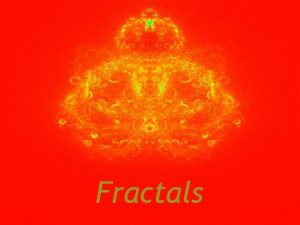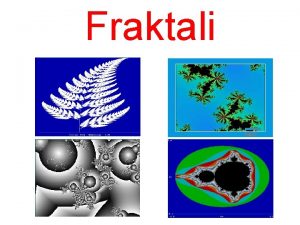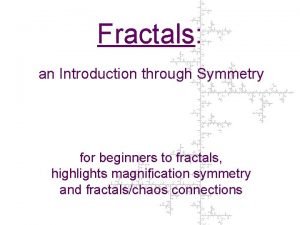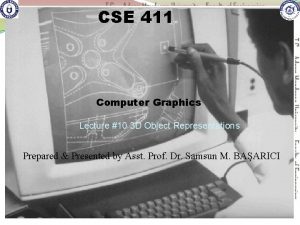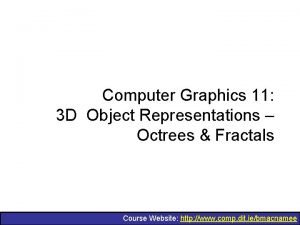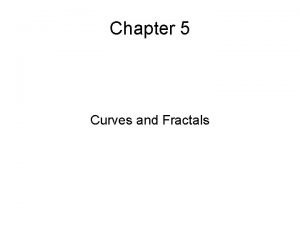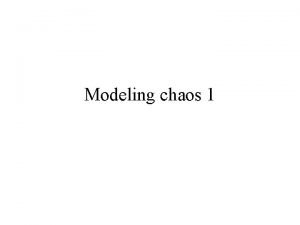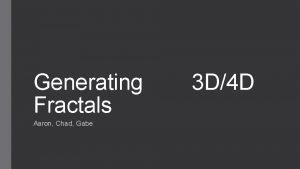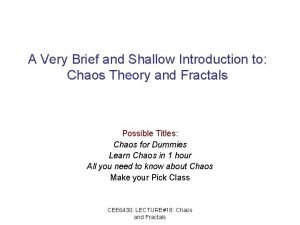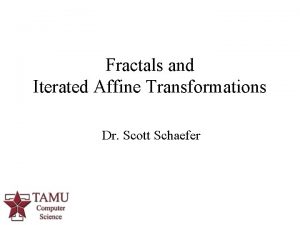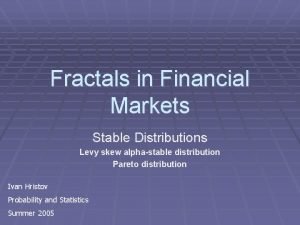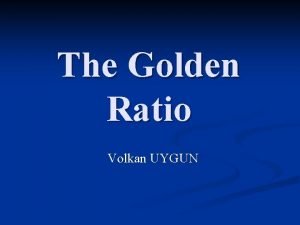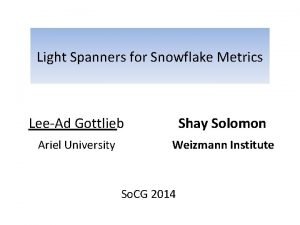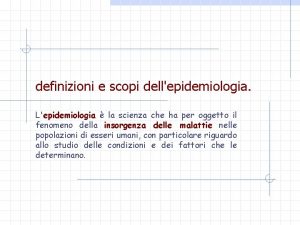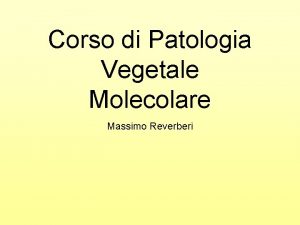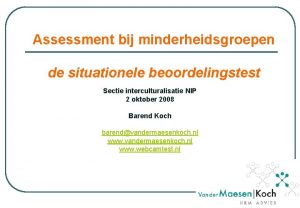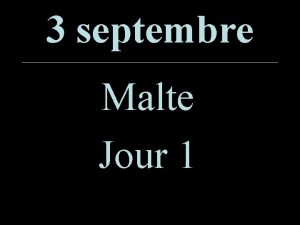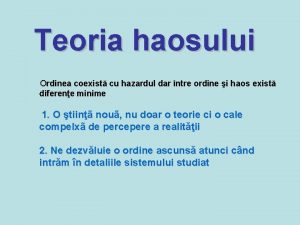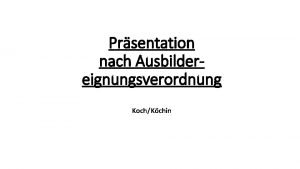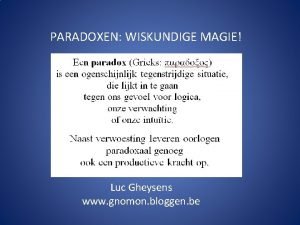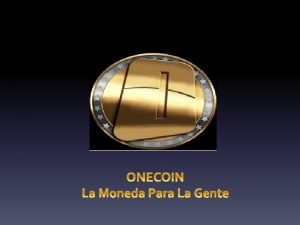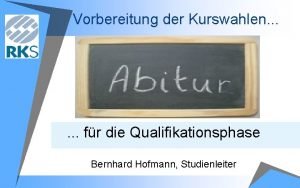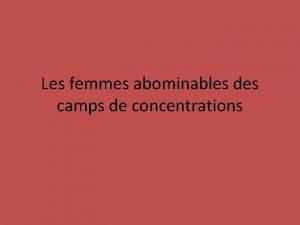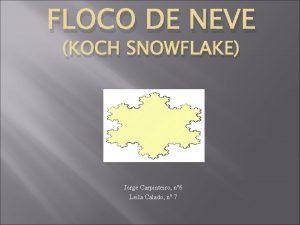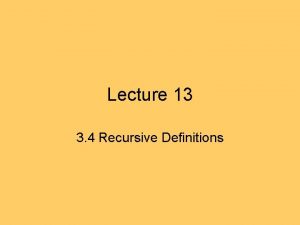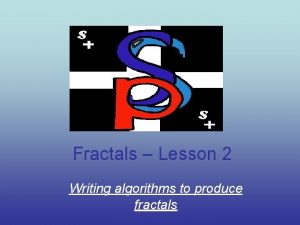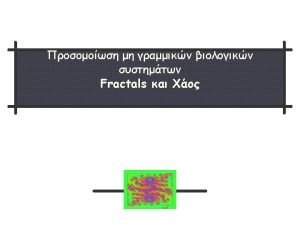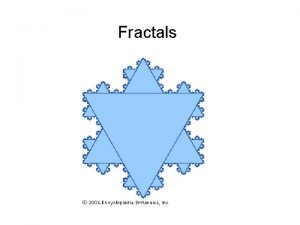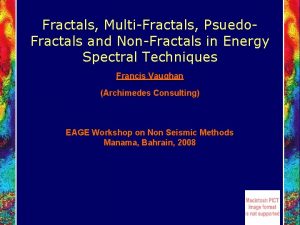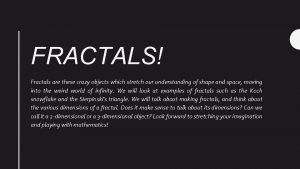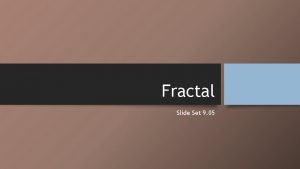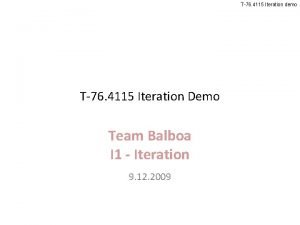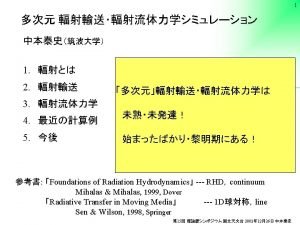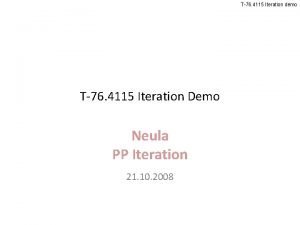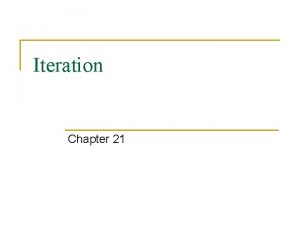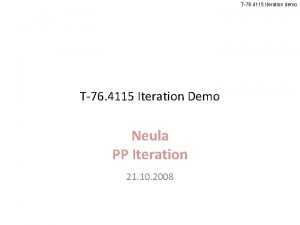Fractals The Koch Snowflake First iteration After 2












































- Slides: 44

Fractals

The Koch Snowflake First iteration After 2 iterations

After 3 iterations

4

After n iterations

After iterations (work with me here, people)

The Koch snowflake is six of these put together to form. . . well, a snowflake.

Notice that the perimeter of the Koch snowflake is infinite. . . but that the area it bounds is finite (indeed, it is contained in the white square).

Area of Koch Snowflake • First, the area of triangle = a 9

Area of First iteration 10

Area of the Second Iteration 11

Area of the Third iteration 12

Formula for area of Koch Snowflake 13


Each of the six sides of the Koch snowflake is self-similar: If you take a small copy of it. . . then dilate by a factor of 3. . . you get four copies of the original.

But self-similarity is not what makes the Koch snowflake a fractal! (Contrary to a common misconception. ) After all, many common geometric objects exhibit self-similarity. Consider, for example, the humble square.

If you take a small square. . . and dilate by a factor of 2. . . then you get 4 copies of the original. A square is self-similar, but it most certainly is not a fractal.

If you take a small square. . . and dilate by a factor of 3. . . then you get 9 copies of the original.

Let k be the scale factor. Let N be the number of copies of the original that you get. Note that for the square, we have that: Or in other words, we have:

Let’s compute for some other shapes.

Line segment Original Dilated k = scale factor = 2 N = number of copies of original = 2

Triangle Original Dilated k = scale factor = 2 N = number of copies of original = 4

Cube Original Dilated k = scale factor = 2 N = number of copies of original = 8


Shape Square 2 Line segment 1 Triangle 2 Cube 3 What does tell us about a shape?

That’s right: tells us the dimension of the shape. (Note that for this to make sense, the shape has to be self-similar. ) So for a self-similar shape, we can take to be the definition of its dimension. (It turns out that this definition coincides with a much more general definition of dimension called the fractal dimension. )

Now let’s recall what k and N were for one side of the Koch snowflake: k = scale factor = 3 N = number of copies of original = 4

So each side of the Koch snowflake is approximately 1. 261 -dimensional. That’s what makes the Koch snowflake a fractal – the fact that its dimension is not an integer. Even shapes which are not self-similar can be fractals. The most famous of these is the Mandelbrot set.

The Sierpinski Carpet

perimeter = 4(3) + 4(1) area = Start with a square of side length 3, with a square of side length 1 removed from its center.

perimeter = area = Think of this shape as consisting of eight small squares, each of side length 1. From each small square, remove its central square.

Iterate.

perimeter = area = Iterate.

perimeter = area = Iterate.

perimeter = area = Iterate.

perimeter = area = Iterate.

The Sierpinski carpet is what’s left after you’re finished removing everything. In other words, it’s the intersection of all the previous sets.

perimeter =

area = =0

So the Sierpinski carpet has an infinite perimeter – but it bounds a region with an area of zero! Weird

Your turn: compute the fractal dimension of the Sierpinski carpet.

The Sierpinski carpet has a 3 -dimensional analogue called the Menger sponge.

Its surface area is infinite, yet it bounds a region of zero volume.

The fractal dimension of the Menger sponge is:
 Sierpinski carpet perimeter
Sierpinski carpet perimeter After me after me after me
After me after me after me If any man come after me
If any man come after me Fractals
Fractals Magnification symmetry of fractals
Magnification symmetry of fractals Self squaring fractals
Self squaring fractals Recursive fractals c++
Recursive fractals c++ Octrees in computer graphics
Octrees in computer graphics Fractal curve in computer graphics
Fractal curve in computer graphics Fractals and chaos
Fractals and chaos Quaternion fractals
Quaternion fractals Cauliflower chaos fractals every
Cauliflower chaos fractals every Fractals
Fractals Fractals in financial markets
Fractals in financial markets Golden ratio angelina jolie
Golden ratio angelina jolie Snowflake oltp or olap
Snowflake oltp or olap Snowflake webquest
Snowflake webquest Golden ratio snowflake
Golden ratio snowflake Altr snowflake
Altr snowflake Snowflake ntile
Snowflake ntile Where does “snowflake girl” help to deliver presents
Where does “snowflake girl” help to deliver presents Snowflake metrics
Snowflake metrics Max koch
Max koch Koch's postulates exceptions
Koch's postulates exceptions Koch's postulates exceptions
Koch's postulates exceptions Pasteurized
Pasteurized Cotton fever
Cotton fever Postulati di koch
Postulati di koch Postulati di koch
Postulati di koch Koch's postulates exceptions
Koch's postulates exceptions Exception of koch postulates
Exception of koch postulates Barend koch
Barend koch Juan gabriel rodriguez sofifa
Juan gabriel rodriguez sofifa Dierk koch
Dierk koch Teoria hazardului
Teoria hazardului Pentola di koch
Pentola di koch Beta-propiolactone sterilization
Beta-propiolactone sterilization Einweisungsgespräch
Einweisungsgespräch Sneeuwvlok van koch
Sneeuwvlok van koch Dr kristoffer greaves
Dr kristoffer greaves Portal lanis system
Portal lanis system Koch and arnold steam sterilizer
Koch and arnold steam sterilizer Juana bormann
Juana bormann Gunter koch
Gunter koch Koch and arnold steam sterilizer
Koch and arnold steam sterilizer
